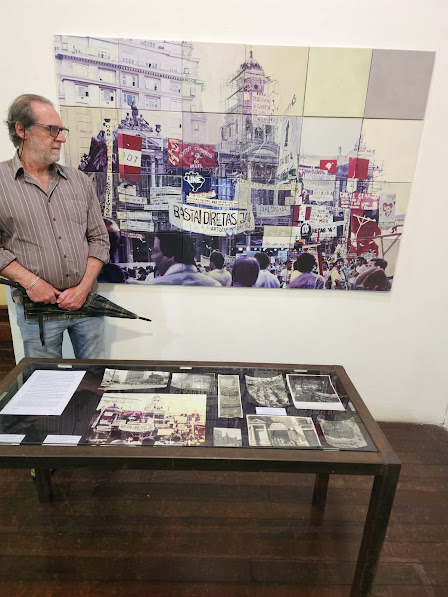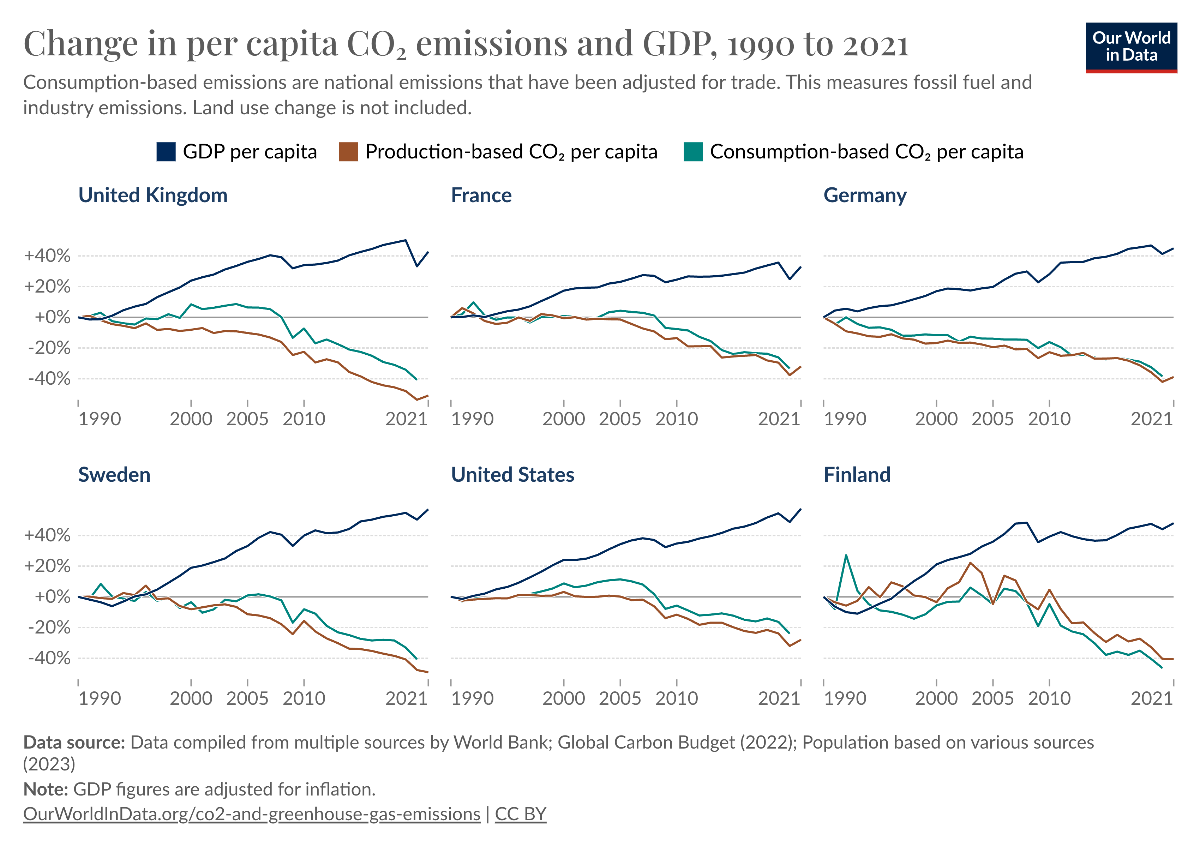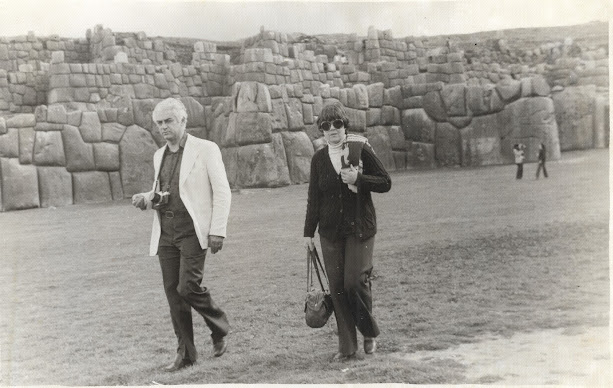This edition was by Aryn Baker, with the data point by Kyla Mandel, and edited by Kyla, and Elijah Wolfson. We welcome any feedback at climate@time.com. |
|
|
#Le TEMPS
Le fait du jour: Emmanuel Macron fait un clin d’œil
européen à la Suisse Peter Klaunzer/Keytone via AP Pourquoi c’est important: Emmanuel Macron s’est adressé aux plus méfiants des
Suisses envers l’Europe lors du premier jour de sa visite d’Etat: «Vous ne le savez
peut-être pas encore, mais vous êtes des Européens!». Plusieurs points précis ont été
abordés à Berne, des relations européennes à la fuite des soignants français.
Ce qu’il faut en retenir #Delanceyplace Today's selection -- from Your Brain on Art: How the Arts Transform Us by Susan Magsamen and Ivy Ross. The physiological impact of music on the human body: “A cardiologist [at Stanford] named Sean Wu had been puzzling over a question about the [heart]'s structure. He wanted to generate heart tissue in the lab in order to create models that would help explain certain cardiac diseases. Eventually, he hoped to be able to create heart patches for patients with weak cardiac walls or with damage from heart attacks.
“With more than an estimated 37 trillion human cells in our body to work with, scientists are having excellent success generating human tissue in the lab, for everything from brains and bladders to muscle and skin. This new field known as biomaterial design is merging the disciplines of materials engineering and biology in order to grow tissue outside of the body in a lab.
“Heart cells are special, though. First, they are incredibly complex and challenging to create. Heart cells are also densely packed, which allows them to work in tandem and beat. If they are designed too far apart they won't sync. Too close together, they could smother and die. And so, from an engineering perspective, hearts are the Taj Mahal, the Empire State Building, of organs. You may imagine what you want to build, but you need incredible structural engineering to make it happen.
“A colleague at Stanford, an acoustic bioengineer named Utkan Demirci, had an idea for Wu. Move the heart cells with sound. Demirci is among a growing number of biomedical researchers tapping into aesthetics, like sound waves, to design cellular structures. Because sound waves move molecules, they can travel through different media--like solids, gels, liquids, and gases--made of molecules. They are versatile. In this case, Demirci put heart cells in a gelled substance, and by tweaking the acoustics he created different sizes and shapes of sound waves (imagine a small ripple amping up into a tidal wave). The cells rode the waves across the gel and into the extraordinary patterns.
“As Demirci triggered acoustic waves on a microscale, he and Wu watched the heart cells dance into patterns. They could adjust the patterns within seconds by tweaking the acoustics. ‘You change the frequency and amplitude, and the cells move into a new spot right in front of your eyes,’ Wu said in 2018.
“The work Demirci and Wu were tapping into is called cymatics--the science of visualizing audio frequencies. This process was discovered by Swiss medical doctor and pioneer Hans Jenny, who coined the term and published the first volume on the topic in 1967. Jenny explained in his book Cymatics: A Study of Wave Phenomena and Vibration that ‘acoustic effects of sound waves is not an unregulated chaos. It is a dynamic but ordered pattern.’
| | Resonance made visible with black seeds on a harpsichord soundboard |
“After their discovery, Stanford University tweeted out the quilt-like image and asked: Is it art or is it science?
“It is, wonderfully, both. Researchers are removing the ‘or’ to make it ‘and.’ Art and science together are potent medicine, capable of radically transforming our physical health.
“Think about this experiment the next time you feel moved by your favorite song. You are literally changed, on a cellular level, by aesthetics. In the case of the red quilt, sound caused heart cells to move. All stimuli that we encounter--visual, auditory, somatosensory, gustatory, olfactory, and others--change the structure and function of cells within our brains and bodies. They do so in fundamental ways, including altering cell cycle, proliferation, viability, and binding of hormones. And when we make those aesthetic inputs multidimensional, we open the door for healing to occur.
“One of the most important developments in the arts-meets-science approach to physical health has been the ways in which researchers have begun to identify key neurobiological mechanisms. Mechanisms are the many chemical and physical activities that underlie how things work in your body. Digesting your latest meal, for instance, happens because of multiple mechanisms, from saliva production in the mouth to chemicals in the stomach to the ways nutrients are absorbed. We understand how and why the body digests food. And by better understanding the mechanisms engaged when using the arts, practitioners are able to design and enhance interventions with greater precision.
“In a 2021 study published in the journal Lancet Psychiatry, Daisy Fancourt and her team studied the mounting evidence for the benefits of leisure activities, such as participating in the arts, on human health. They identified and mapped more than 600 mechanisms--from improving respiratory and physical function to enhancing immune function and developing group values--that occur both in our individual bodies, as well as at the group and societal level. These mechanisms are broadly grouped into psychological, biological, social, and behavioral.
“Another critical point that Daisy and her fellow researchers made in this study about arts and mechanisms is related to the idea of complexity science. ‘People have often viewed the field of arts and health as needing to operate like the field of pharmacology,’ Daisy explained. For example, a drug has an active ingredient with maybe one or two biological mechanisms of action and these have predictable outcomes. ‘Whereas, our clear point in this paper is that in complexity science, you recognize that there are hundreds of ingredients, hundreds of mechanisms. They all work bidirectionally, not just unidirectionally and they're moderated by external factors.’
“This summarizes quite nicely why the arts have such a potent effect on our health: Whereas a pharmacological treatment works on one, maybe two, pathways, the arts have the ability to trigger hundreds of mechanisms that work in concert.
“‘This point is really important to get across,’ Daisy says, ‘because sometimes people have seen the complexity and the 'messiness' of arts and health mechanisms as a weakness where in fact, it is the very heart of why the arts work. It's just that we've been applying an overly simplistic biomedical lens on something that needs to be seen with a complexity science lens.’
“Today, the arts are being used in at least six distinct ways to heal the body: as preventative medicine; as symptom relief for everyday health issues; as a treatment or intervention for illness, developmental issues, and accidents; as psychological support; as a tool for successfully living with chronic issues; and at the end of life to provide solace and meaning."
#|
| | AI System Beats Chess Puzzles With ‘Artificial Brainstorming’By STEPHEN ORNES By bringing together disparate approaches, machines can reach a new level of creative problem-solving.
Read the article |
|
| Quanta is conducting a series of surveys to better serve our audience. Take our newsletter subscriber survey and you will be entered to win free Quanta merchandise. |
|
 | Rogue Worlds Throw Planetary Ideas Out of OrbitBy CHARLIE WOOD Scientists have recently discovered scores of free-floating worlds that defy classification. The new observations have forced them to rethink their theories of star and planet formation.
Read the article
Related:
JWST Spots Giant Black Holes
All Over the Early Universe
By Charlie Wood |
 | The Astonishing Behavior of Recursive SequencesBy ALEX STONE Some strange mathematical sequences are always whole numbers — until they’re not. The puzzling patterns have revealed ties to graph theory and prime numbers, awing mathematicians.
Read the blog
Related:
The Connoisseur
of Number Sequences
By Erica Klarreich (2015) |
|
During Pregnancy, a Fake ‘Infection’ Protects the FetusBy ANNIE MELCHOR Cells in the placenta have an unusual trick for activating gentle immune defenses and keeping them turned on when no infection is present. It involves crafting and deploying a fake virus.
Read the blog
|
|
|
Put Your Heads Together
A new genetic analysis of starfish reveals that they are all head, no body. This surprising finding could offer hints about why they evolved to have such unique radial symmetry, reports Lori Youmshajekian for Scientific American. The physicist Nikta Fakhri believes that starfish hold clues to even deeper biological mysteries. In 2023, Charlie Wood interviewed Fakhri for Quanta about how studies of starfish helped her see how physical phenomena such as symmetry breaking define life.
A Mounting Meltdown
Glaciers in Greenland are melting twice as fast as they were a few decades ago, reports Delger Erdenesanaa for The New York Times. They have shrunk more than 35% in volume since 1978. Melting at the poles is locked in a feedback loop with global climate change: As the ice melts, it reflects less of the sun’s energy back to space. In 2020, Shannon Hall wrote for Quanta about an Arctic mission to study the dynamics of the melting ice. |
|
|
#The Universe in verse The Universe in Verse: Regina Spektor Reads “Theories of Everything” by Astronomer, Poet, and Tragic Genius Rebecca ElsonBY MARIA POPOVA
In her haunting ode to the Hubble Space Telescope, Adrienne Rich serenaded “the ex-stasis of galaxies / so out from us there’s no vocabulary / but mathematics and optics / equations letting sight pierce through time / into liberations, lacerations of light and dust.” It is a peculiar meta-miracle, to fuse these complementary modes of sensemaking — mathematics, the language of truth, and poetry, the language of meaning — into something that enlarges both, expanding the horizons of beauty and understanding in the mind beholding the fusion./.../ #TIME
Photographer Marcos del Mazo—LightRocket/Getty Images
Sebastião Salgado is a Brazilian photographer and co-founder of nonprofit
Instituto Terra, which works to restore the country’s Atlantic forest. The project
was initially launched on his parents’ cattle ranch in eastern Brazil; Salgado
used his photographs to raise funding for a seedling nursery, laboratory, and
training center, which allowed the project to plant about 300 different species of
native trees and to restore 2,000 natural springs. In 2022–23, it launched
“Empresa Amiga,” a program that will raise funds from nearly a dozen corporate
partners for forest and water basin restoration.What is the single most important action you think the public, or a specific company or government, needs to take in the next year to advance the climate agenda?
There is only one way to move the climate agenda forward in the world, at personal, company and state level, and that is to plant trees. There is no
machine on the planet capable of sequestering carbon dioxide. Only trees
can do this through photosynthesis. By planting trees we will solve the
planetary carbon problem and, more importantly, we will rehabilitate
local biodiversity. In the last 40 years, Germany has lost 70% of its
biodiversity. What’s more, by planting forests we also restore water
sources by retaining humidity in the soil. That’s the primordial action
I would advise: planting trees.
What sustainability effort do you hope will gain popularity
with the general public this year, and why?
We should focus on the integration of the world of land, rural
landowners, Indigenous and peasant communities into the global
debate on ecology.
The rural world is not integrated into this debate, which is 95%
dominated by the urban sector. And urban people don’t know the
land and the planet.
If we have to plant forests, we won’t do it in the cities, but in the countryside.
Where should climate activism go in the next year?
Climate activism should focus on a reorientation of carbon credits.
We have to separate what carbon is recovered in industries by
reducing carbon emissions, and the real carbon sequestration
that comes from planting forests. Organizations around the world
have to fight for there to be a sufficient financial return for rural landowners to have an alternative use for their land between
livestock, agriculture, and forestry. Otherwise, they will never
plant forests. We must fight for a real carbon fund for planting
trees.
|

%2015.19.37_41926935.jpg)
%2021.06.00_27bd5f4a.jpg)






























